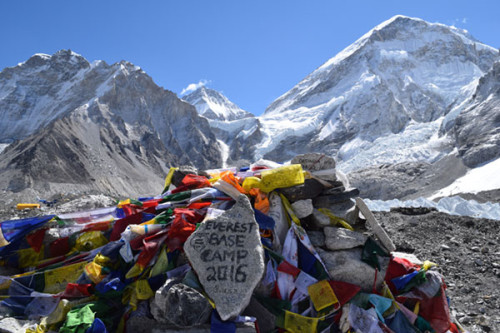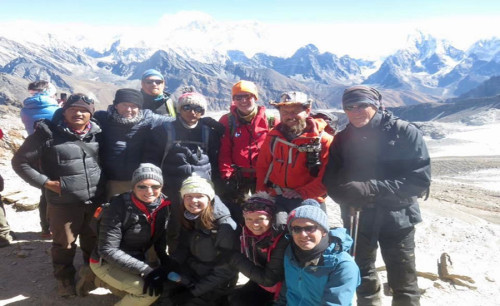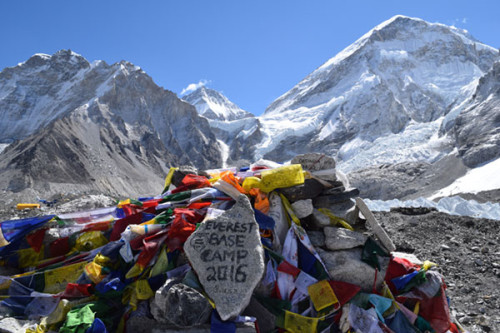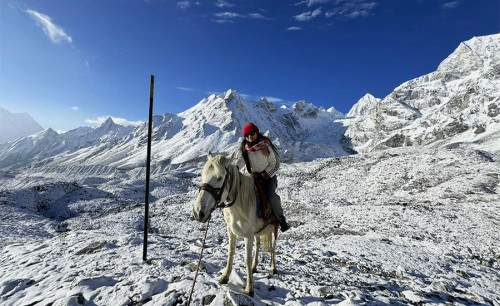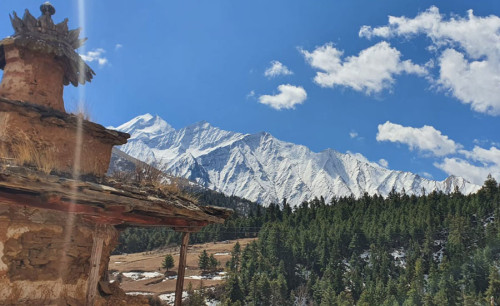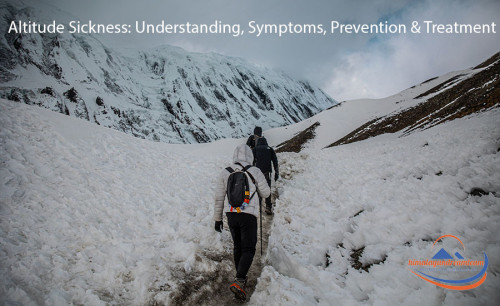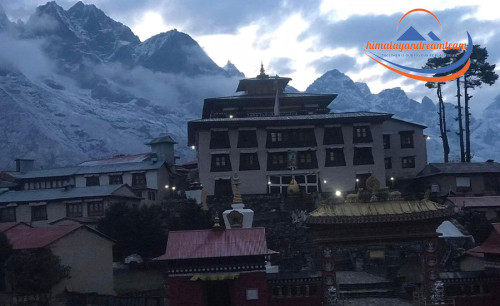Top Buddhist Pilgrimage Sites in Nepal
Published On : 13th May, 2024 By Himalayan Dream Team

Nepal, a country where the air resonates with chanting monks and the ringing of prayer bells, is deeply steeped in Buddhist tradition. It is a land where Buddhism thrives in its many forms, intertwined with the local cultures and historical narratives. This spiritual landscape offers pilgrims a profound sense of connection and tranquility. In this blog post, we explore the top Buddhist pilgrimage sites in Nepal, each with its own unique spiritual significance and captivating stories.
1. Lumbini
Location: Rupandehi District, Province No. 5
Significance: Recognized as the birthplace of Siddhartha Gautama, who later became the Buddha, Lumbini is one of the holiest places in Buddhism. This UNESCO World Heritage Site is revered as the starting point of Buddhism and attracts scholars, monks, and spiritual seekers from around the world.
Features: The site is marked by the Maya Devi Temple, which houses an ancient stone relief depicting the birth of the Buddha. The Ashoka Pillar, erected by Emperor Ashoka in 249 BC, declares Lumbini as the Buddha's birthplace. Numerous monasteries built by different Buddhist nations can also be found, offering a glimpse into the global impact of Buddhism.
2. Swayambhunath Stupa (Monkey Temple)
Location: Kathmandu Valley
Significance: Known affectionately as the Monkey Temple due to its resident primates, Swayambhunath is one of the oldest and most sacred Buddhist sites in Nepal. It is said to have been established more than 2,500 years ago.
Features: The stupa itself is a beautiful white dome topped with a golden spire, painted with the all-seeing eyes of the Buddha, looking out across the four cardinal directions. The site is a mosaic of smaller chaityas and temples, and is a hub of activity during Buddha Jayanti (the Buddha’s birthday).
3. Boudhanath Stupa
Location: Kathmandu
Significance: Boudhanath is one of the largest stupas in the world and a focal point of Tibetan Buddhism in Nepal. It has been an important place of pilgrimage and meditation for Tibetan Buddhists and local Nepalis since the 14th century.
Features: The stupa’s massive mandala makes it one of the largest spherical stupas in Nepal. The area surrounding Boudhanath is a thriving center of Tibetan culture, filled with monasteries and meditation centers, and the air is thick with the scent of incense and the sound of monks chanting mantras.
4. Namo Buddha
Location: Kavrepalanchok District, near Dhulikhel
Significance: Namo Buddha is a significant site associated with a jataka tale of the Buddha. According to legend, the Buddha, in a previous life as a prince, encountered a starving tigress close to death. Moved by compassion, he offered his body to her as food to save her and her cubs.
Features: The site is marked by the Thrangu Tashi Yangtse Monastery, which offers panoramic views of the surrounding mountains and valleys. Pilgrims and tourists alike come to pay homage and experience the peaceful atmosphere of this location.
5. Kopan Monastery
Location: Kathmandu
Significance: Founded in the 1970s by Lama Yeshe and Lama Zopa Rinpoche, Kopan Monastery is known for its teachings of Tibetan Buddhism. It is a center of learning, contemplation, and meditation and has played a significant role in spreading Buddhism to the Western world.
Features: The monastery is home to hundreds of monks and nuns and offers a range of meditation courses and retreats for both beginners and advanced practitioners. Its hilltop location provides a serene backdrop for spiritual growth and reflection.
6. Maratika Cave
Location: Halesi Tuwachung Municipality, Khotang District
Significance: Maratika Cave is revered in Tibetan Buddhism as the site where Padmasambhava (Guru Rinpoche) attained immortality through the practice of long-life rituals.
Features: The caves are a place of pilgrimage and contain several sacred shrines where devotees can meditate and pay their respects. The journey to Maratika itself is considered a spiritual exercise, reflecting the hardships often endured in pursuit of enlightenment.
Each of these sacred sites offers a unique spiritual experience, deeply rooted in the teachings and traditions of Buddhism. Visiting these places provides not only a deeper understanding of Buddhism but also a profound sense of peace and personal reflection. Whether you are a devout Buddhist or a curious traveler, the Buddhist pilgrimage sites in Nepal promise a journey filled with spiritual richness and cultural insight.
Recent From Blog

10th Apr, 2024

30th Apr, 2024

16th Apr, 2024

23rd Apr, 2024

23rd Apr, 2024

25th Apr, 2024

26th Apr, 2024

26th Apr, 2024

27th Apr, 2024

27th Apr, 2024

29th Apr, 2024

29th Apr, 2024

29th Apr, 2024

2nd May, 2024

2nd May, 2024

6th May, 2024

6th May, 2024

12th May, 2024

12th May, 2024

12th May, 2024

13th May, 2024

12th May, 2024

13th May, 2024

13th May, 2024

12th May, 2024

13th May, 2024

12th May, 2024

12th May, 2024

12th May, 2024

12th May, 2024

12th May, 2024

12th May, 2024

12th May, 2024

13th May, 2024

13th May, 2024

14th May, 2024

14th May, 2024

14th May, 2024

14th May, 2024

15th May, 2024

14th May, 2024

14th May, 2024

16th May, 2024

19th May, 2024

19th May, 2024

20th May, 2024

24th May, 2024

28th May, 2024

28th May, 2024

29th May, 2024

29th May, 2024
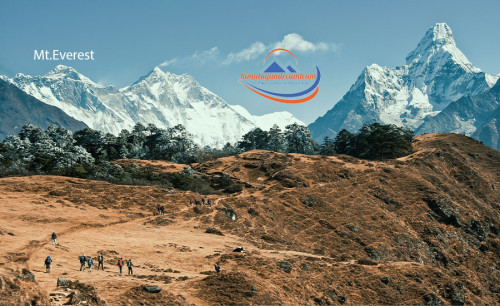
29th May, 2024

29th May, 2024

29th May, 2024


